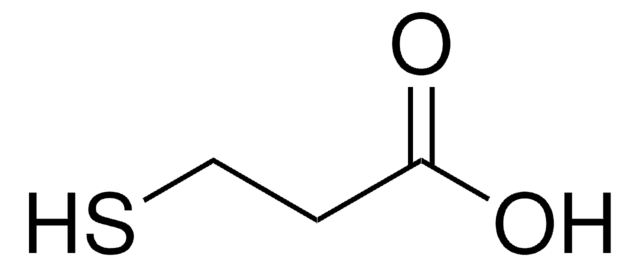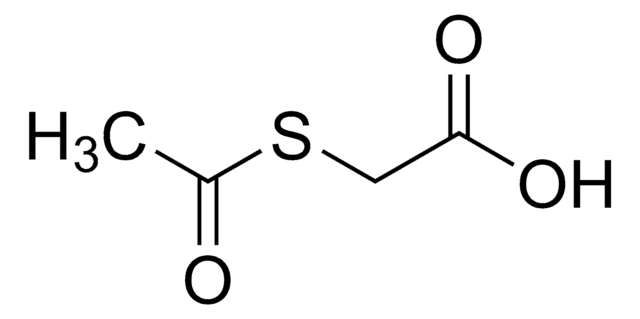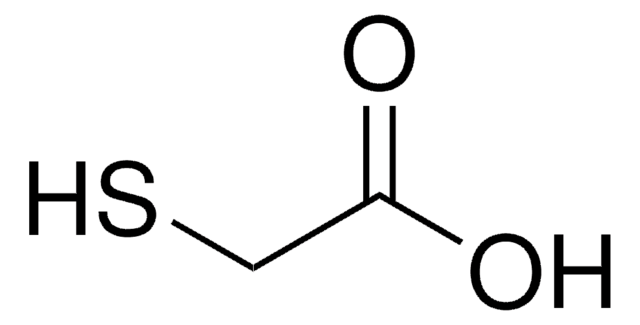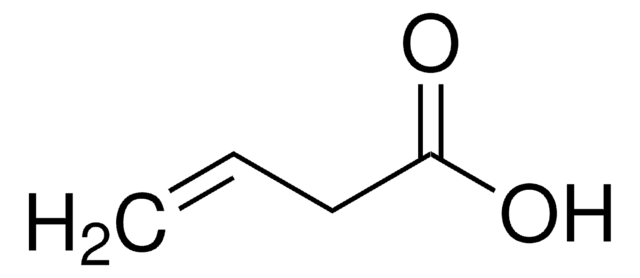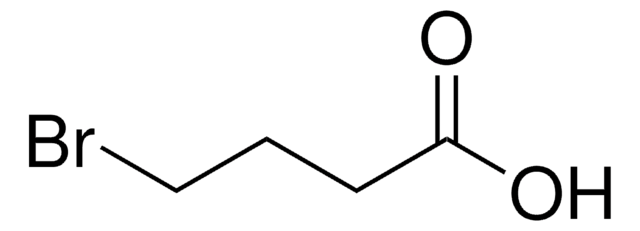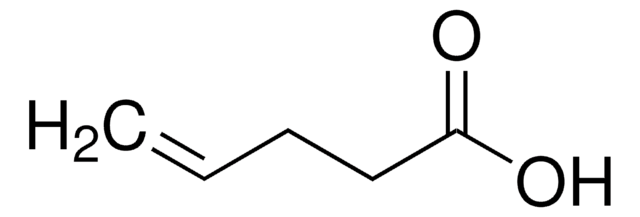All Photos(2)
About This Item
Linear Formula:
CH3COS(CH2)5CO2H
CAS Number:
Molecular Weight:
190.26
MDL number:
UNSPSC Code:
12352100
PubChem Substance ID:
NACRES:
NA.22
Recommended Products
Assay
97%
refractive index
n20/D 1.491 (lit.)
density
1.144 g/mL at 25 °C (lit.)
functional group
carboxylic acid
thioester
SMILES string
CC(=O)SCCCCCC(O)=O
InChI
1S/C8H14O3S/c1-7(9)12-6-4-2-3-5-8(10)11/h2-6H2,1H3,(H,10,11)
InChI key
PIFIISOIFYMVLS-UHFFFAOYSA-N
General description
6-Acetylthiohexanoic acid (6-ATH), also known as 6-(acetylsulfanyl)hexanoic acid, is a hexanoic acid derivative that contains thioacetate group.
Application
6-Acetylthiohexanoic acid has been used in a study to estimate its minimal inhibitory concentration (MIC) by microdilution assay. It may be used as a precursor for generating poly-3-hydroxy-6-acetylthiohexanoateco-4-acetylthiobutanoate (PHACOS).
Signal Word
Warning
Hazard Statements
Precautionary Statements
Hazard Classifications
Eye Irrit. 2 - Skin Irrit. 2 - STOT SE 3
Target Organs
Respiratory system
Storage Class Code
10 - Combustible liquids
WGK
WGK 3
Flash Point(F)
Not applicable
Flash Point(C)
Not applicable
Personal Protective Equipment
dust mask type N95 (US), Eyeshields, Gloves
Choose from one of the most recent versions:
Certificates of Analysis (COA)
Lot/Batch Number
Don't see the Right Version?
If you require a particular version, you can look up a specific certificate by the Lot or Batch number.
Already Own This Product?
Find documentation for the products that you have recently purchased in the Document Library.
Poly (3-hydroxyalkanoate) s: diversification and biomedical applications: a state of the art review.
Hazer DB, et al.
Materials Science & Engineering. C, Materials For Biological Applications, 32(4), 637-647 (2012)
Nina Dinjaski et al.
Biomaterials, 35(1), 14-24 (2013-10-08)
Biomaterial-associated infections represent a significant clinical problem, and treatment of these microbial infections is becoming troublesome due to the increasing number of antibiotic-resistant strains. Here, we report a naturally functionalized bacterial polyhydroxyalkanoate (PHACOS) with antibacterial properties. We demonstrate that PHACOS
Our team of scientists has experience in all areas of research including Life Science, Material Science, Chemical Synthesis, Chromatography, Analytical and many others.
Contact Technical Service